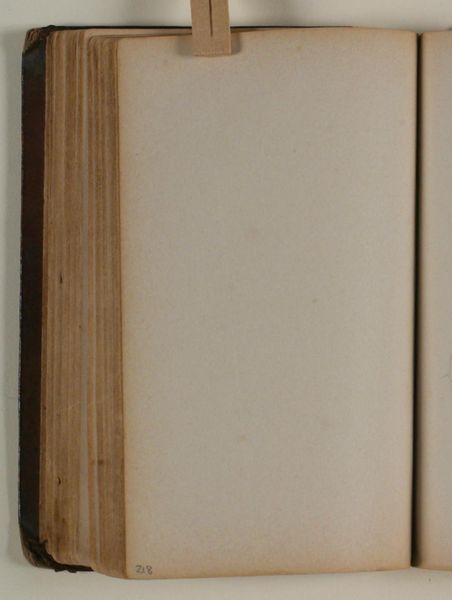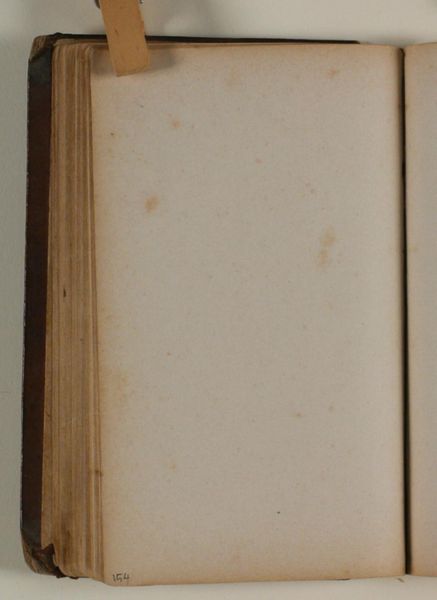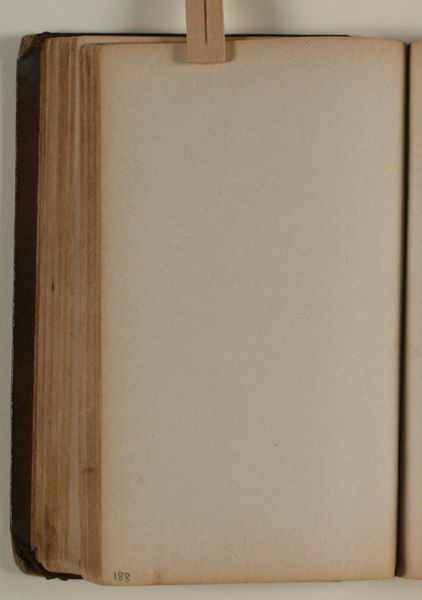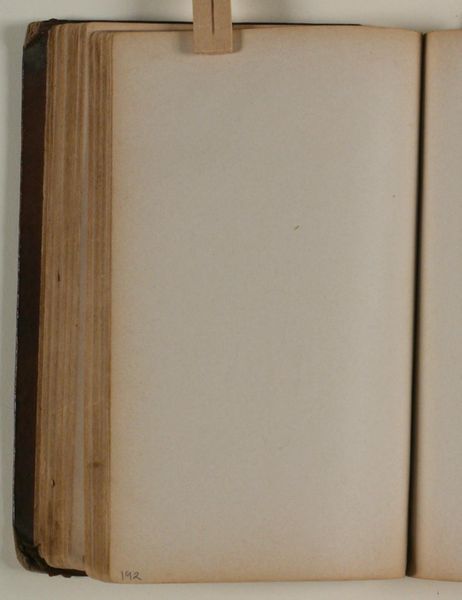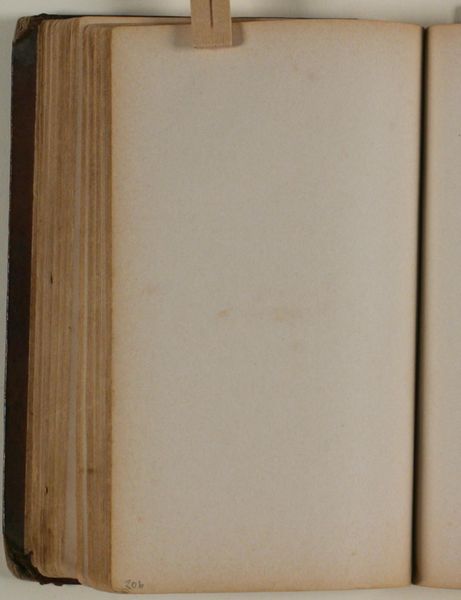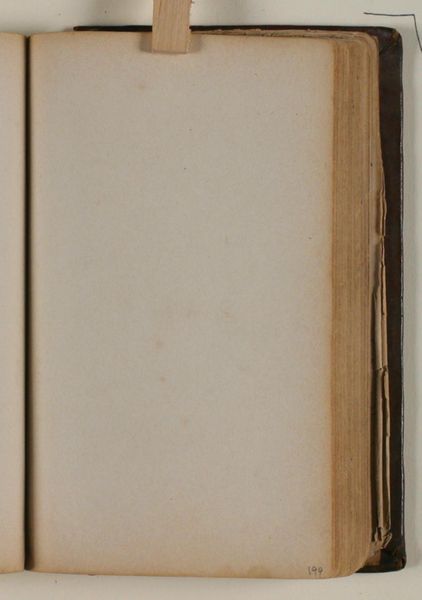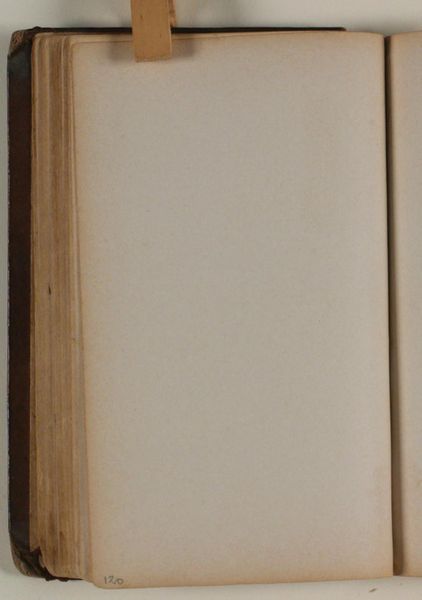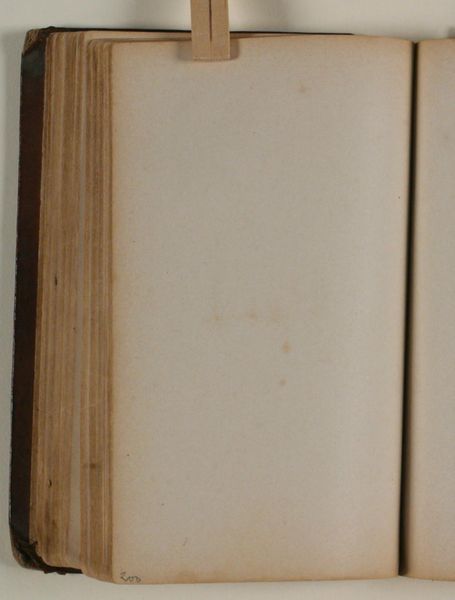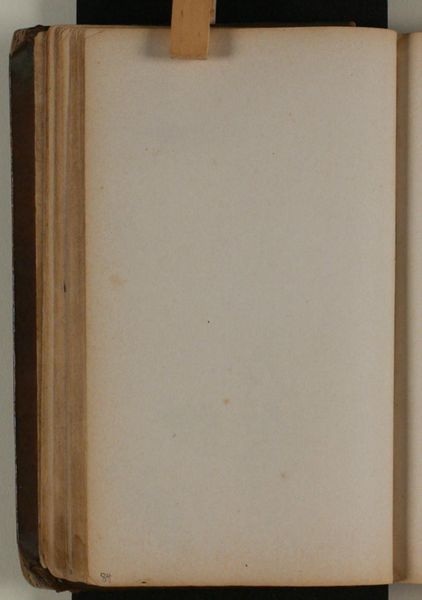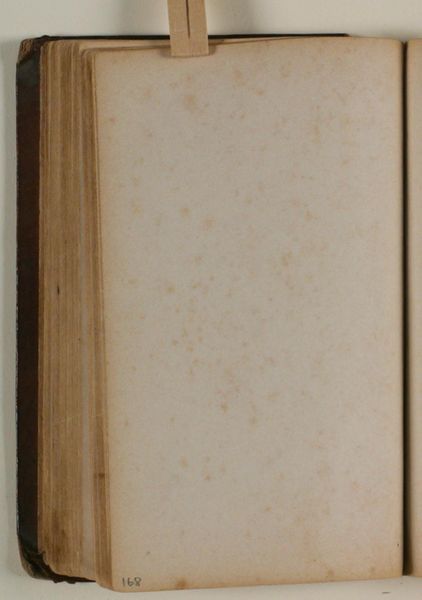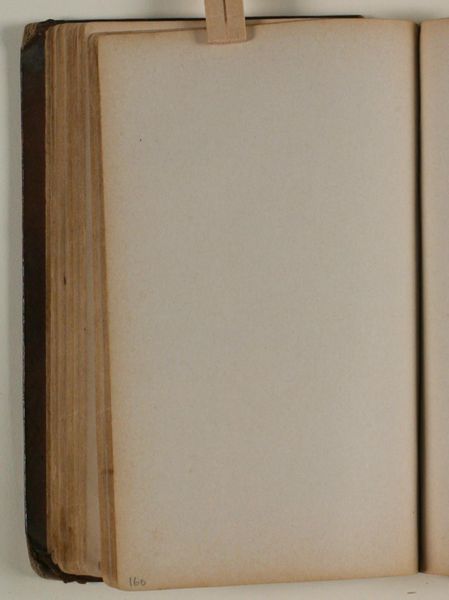
drawing, coloured-pencil, paper
#
drawing
#
coloured-pencil
#
water colours
#
paper
#
coloured pencil
Editor: We are looking at "Let blyantsrids" by Niels Larsen Stevns, made sometime between 1864 and 1941. It's a drawing made with coloured pencil and other media on paper. It appears to be an image of a very old book. I’m struck by the texture of the paper and how time has clearly aged it. What do you see in this piece? Curator: The focus here is immediately on the objectness of the book itself. Notice the stark contrast between the smooth, mostly blank pages and the roughly textured, aged binding. The artist compels us to contemplate the physical nature of knowledge. The materiality speaks to time's effect; observe the foxing on the pages, its gentle discolorations disrupting the pristine surface. What is suggested by the blank pages? Editor: Perhaps that the book is unfinished, a space for potential? The texture feels significant, almost tactile even in a digital image. Curator: Precisely. The book’s potential becomes a formal element. Think about semiotics: The book represents a vessel, a container for narrative, knowledge or even art, but remains stubbornly empty, its message deferred. Observe the artist’s skillful rendering of the page edges and how the artist manages the colour composition, it gives depth, a characteristic, no? Editor: That makes sense. Now that you point it out, the tight control of color is something else. This has completely shifted how I understand the piece, before it was literally an aged object, and now I can see a conceptual dimension that I had missed earlier. Curator: Art provides this space, not just for representation, but for philosophical inquiry, right? A visual construction designed to initiate questions and thoughts and expand knowledge through perception of a single work.
Comments
No comments
Be the first to comment and join the conversation on the ultimate creative platform.
